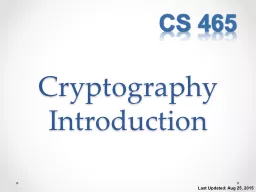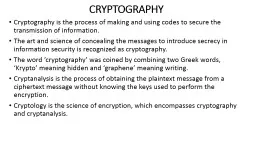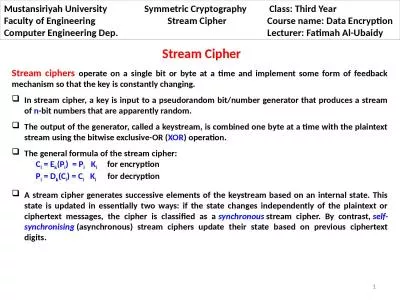PPT-Ideal Models in Symmetric Cryptography
Author : olivia-moreira | Published Date : 2016-03-12
Stefano Tessaro UC Santa Barbara Visions of Cryptography Weizmann Institute CryptoHistory oversimplified 1982 Cryptographic algorithms designed from scratch no
Presentation Embed Code
Download Presentation
Download Presentation The PPT/PDF document "Ideal Models in Symmetric Cryptography" is the property of its rightful owner. Permission is granted to download and print the materials on this website for personal, non-commercial use only, and to display it on your personal computer provided you do not modify the materials and that you retain all copyright notices contained in the materials. By downloading content from our website, you accept the terms of this agreement.
Ideal Models in Symmetric Cryptography: Transcript
Download Rules Of Document
"Ideal Models in Symmetric Cryptography"The content belongs to its owner. You may download and print it for personal use, without modification, and keep all copyright notices. By downloading, you agree to these terms.
Related Documents














